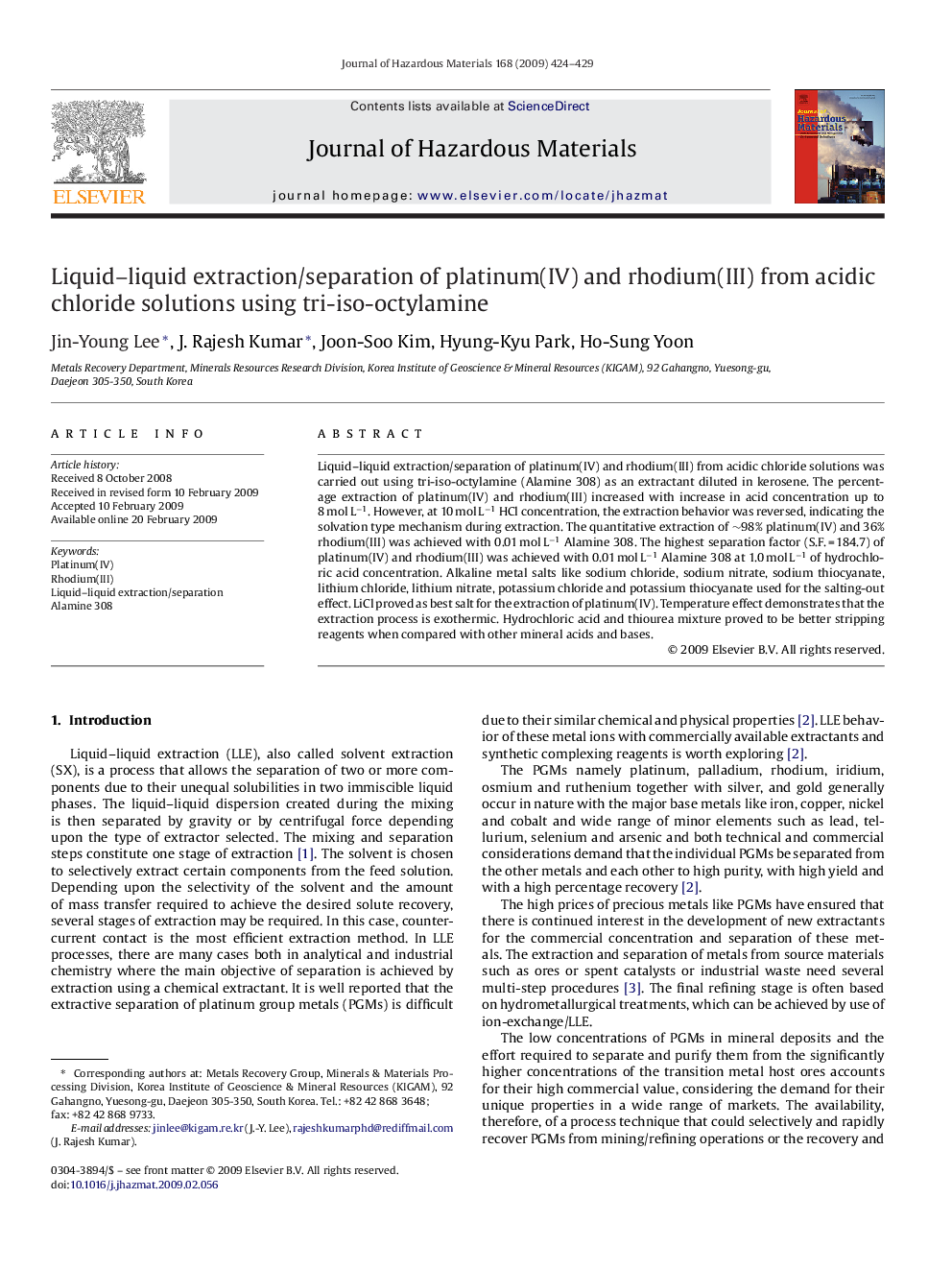| Article ID | Journal | Published Year | Pages | File Type |
|---|---|---|---|---|
| 581360 | Journal of Hazardous Materials | 2009 | 6 Pages |
Abstract
Liquid-liquid extraction/separation of platinum(IV) and rhodium(III) from acidic chloride solutions was carried out using tri-iso-octylamine (Alamine 308) as an extractant diluted in kerosene. The percentage extraction of platinum(IV) and rhodium(III) increased with increase in acid concentration up to 8 mol Lâ1. However, at 10 mol Lâ1 HCl concentration, the extraction behavior was reversed, indicating the solvation type mechanism during extraction. The quantitative extraction of â¼98% platinum(IV) and 36% rhodium(III) was achieved with 0.01 mol Lâ1 Alamine 308. The highest separation factor (S.F. = 184.7) of platinum(IV) and rhodium(III) was achieved with 0.01 mol Lâ1 Alamine 308 at 1.0 mol Lâ1 of hydrochloric acid concentration. Alkaline metal salts like sodium chloride, sodium nitrate, sodium thiocyanate, lithium chloride, lithium nitrate, potassium chloride and potassium thiocyanate used for the salting-out effect. LiCl proved as best salt for the extraction of platinum(IV). Temperature effect demonstrates that the extraction process is exothermic. Hydrochloric acid and thiourea mixture proved to be better stripping reagents when compared with other mineral acids and bases.
Keywords
Related Topics
Physical Sciences and Engineering
Chemical Engineering
Chemical Health and Safety
Authors
Jin-Young Lee, J. Rajesh Kumar, Joon-Soo Kim, Hyung-Kyu Park, Ho-Sung Yoon,
